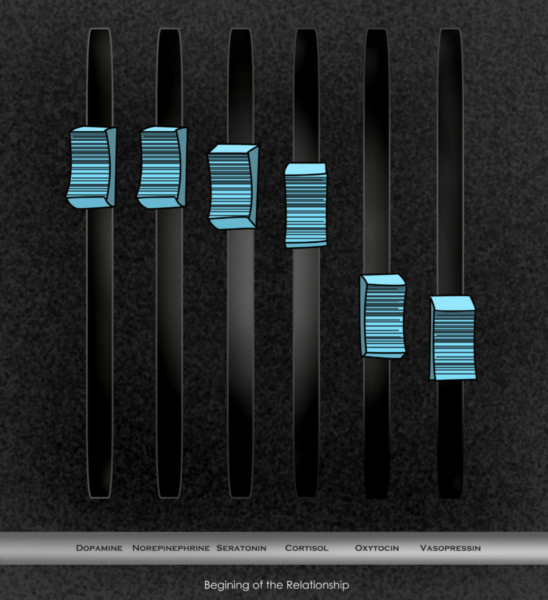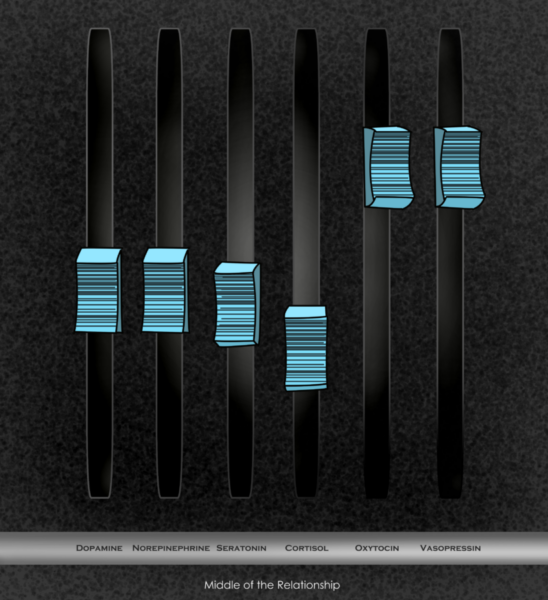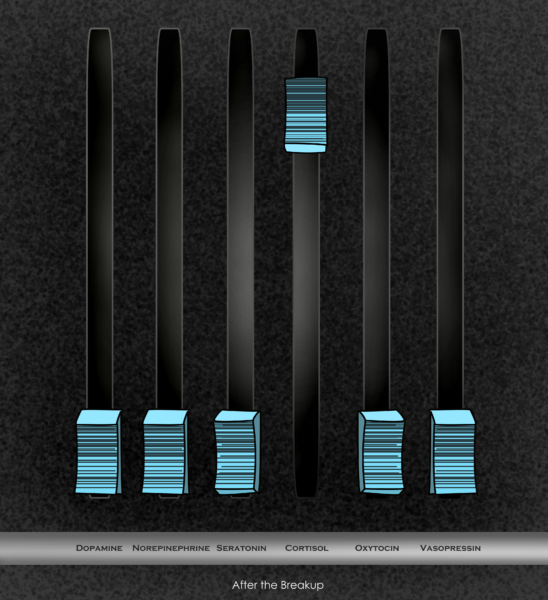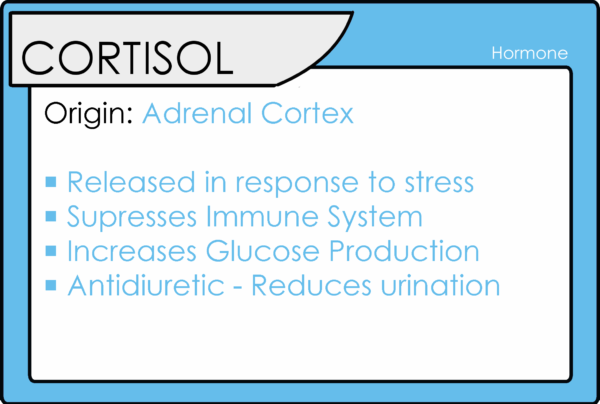Today I’d like to do a deep dive into helping you understand exactly what’s happening in your exes brain during a no contact rule.
So, without a doubt the biggest “fear factor” that people have with no contact usually falls into one of two camps.
- They believe doing a no contact rule will make them seem rude to their ex.
- They believe that a prolonged period of time away from their ex will cause that very same ex to lose feelings for them.
The first “camp” is actually the easiest to combat and you can do so by simply looking at my “official definition” of no contact,
The no contact rule refers to a period of time where you cut off all conceivable communication with an ex after a breakup. The intent of this tactic should NOT be used to make your ex miss you but instead should be used to rebuild your own life so that you outgrow your ex. By doing this, the no contact rule can have the added benefit of making an ex miss you
Since when is taking time for yourself to outgrow your ex considered rude?
Of course, the real reason we are here is to have a response for those that fear the “second camp.”
The only way to really do that is by understanding the latest research on breakups to prove that the no contact rule can actually make an ex think about you more.
Let’s dive in to your exes brain.

What Are Your Chances of Getting Your Ex Boyfriend Back?
Take the quizUnderstanding Your Exes Brain
For avid readers, watchers and listeners you may have heard me cite research from this particular article before, Neuroscience is proving that love is a drug.
According to Dr. Lucy Brown,
The symptoms of heartbreak, such as cravings and emotional and physical dependence, are similar to drug withdrawal.’
But why?
Well, it’s all about the Cortisol baby.
A really great article on our website (that doesn’t get any attention) is called the Anatomy of A Breakup,
Basically it’s about showing you the neurochemistry of what is going on at the beginning, middle and end of a relationship.
For example, this is typically what the major chemicals look like at the beginning of a relationship,
- Dopamine is high
- Norepinephrine is high
- Seratonin is high
- Cortisol is kinda high
- Oxytocin is getting up there
- Vasopressin too.
Here’s what it looks like in the middle of a relationship,
Notice how everything is sort of leveling out.
Not fully, but getting there.
Now here is what your neurochemistry looks like at the end of a relationship,

What Are Your Chances of Getting Your Ex Boyfriend Back?
Take the quizDo you see how high your cortisol is elevated?
For your reference cortisol has also been coined as “the stress hormone,”
- It’s released in response to stress
- It’ll suppress your immune system
- Increase glucose production
- Reduce urination
It’s also the main culprit for why going through a breakup can feel like a drug withdrawal. It’s explosion is also responsible indirectly for the following,
- Lack of motivation (because your dopamine is low)
- Fatigue
- Mood Swings
- Memory problems
- Inability to concentrate
- Sleep problems
- Loss of aptetite
And yes, this also applies to dumpers (even though it doesn’t seem like it will.)
But we haven’t really answered the fundamental question asked at the beginning of this article.
What effect does the no contact rule have on this complicated process your exes brain is going through. Now that I’ve set the stage I think it’s time to move on to the main event.
You know how you’ve heard of the “five stages of grief?”
When it comes to breakups we actually have seven!
Understanding The 7 Stages Of Grief With Breakups
According to Suzanne Lachmann Psy.D. there are seven stages of grief that are typical during a breakup,
- Desperation: This is the stage where you are desperate to understand. My folks with anxious attachment styles know exactly what this is like. There’s a problem with the relationship, they’ll do everything in their power to fix it.
- Denial- This is where you funnel most of your energies into saving the relationship. You deny that it’s over. This also happens to be the stage where most of our clients come to us.
- Bargaining- You are willing to do anything to avoid accepting it’s over. You’ll be a better, more attentive partner. Everything that’s been wrong, you’ll make right. The thought of being without your ex is so intolerable that you will make your own pain go away by winning him or her back, at any cost.
- Relapse- Because the pain is so intolerable, you may actually be able to convince your ex to try again (this may not be the first breakup with this partner). You will temporarily relieve the agony of withdrawal.
- Anger- Initially, you may not be able to connect with feelings of anger. Breaking up plummets you into the unknown, which can evoke immobilizing fear and dread. Fear, at that point, trumps anger. Therefore, when anger sets in, it’s because you have let go of some of your fear, at least temporarily.
- Initial Acceptance- This is the kind of acceptance that, when it happens early in the process, can feel more like surrender. You are holding up your end of the breakup because you have to, not because you want to.
- Redirected Hope- You were leveled by the breakup and have had difficulty letting go, in part because it shattered your relationship with hope. As acceptance deepens, moving forward requires redirecting your feelings of hope—from the belief that you can singlehandedly save a failing relationship to the possibility that you just might be okay without your ex.
Now, this is interesting because really I want to talk about stage four, relapse.
This is by far the longest stage and one that literally disguises itself as stages five and six.
Here’s how it works.
You enter the relapse stage;
- You feel awful and want to do anything to win your ex back
- You try and fail
- You grow angry
- You decide it’s time to move on
- Something happens that draws you back in
- And you start the whole process over and over again
But when I was conducting research for this discussion I got curious at which stage of these seven stages of grief does cortisol level out? What stages does it go back to normal.
Understanding My Cortisol Theory
That’s really where I stumbled upon gold that can pinpoint exactly why I believe no contact works.
Dr Jaime Lee, a medical doctor and founder of workplace wellness company Health Quotient had this to say about elevated cortisol levels:
According to Dr Lee, it can take three to four hours for your cortisol levels to return to normal after a stress response (like an argument or high-stakes meeting), but if your levels have been high for some time, it can take up to six months to balance them out.
Remember that “relapse stage” I was just talking about.
Prolonged time in there can actually keep your cortisol levels high. So, it’s important to remember that both parties of a breakup will go through these stages.
Where our No Contact differs from many of our peers is we believe in an active period of no contact. We want you to be on stage six or seven by the time your no contact rule is over.
So, if you are on stage six by the end, using the tools and habit building approaches we recommend your ex may still be hovering around stage four, making them a lot more likely to respond to you.
This is the important thing no one ever brings up about the no contact rule.
Your absence prolongs that cortisol in your exes brain, potentially extending it for as much as six months. Ideally, by the time you reach out after your no contact you will have been able to lower your own cortisol levels so that the timing is perfect.

What Are Your Chances of Getting Your Ex Boyfriend Back?
Take the quizIt’s not an exact science but that’s the theory behind it.



